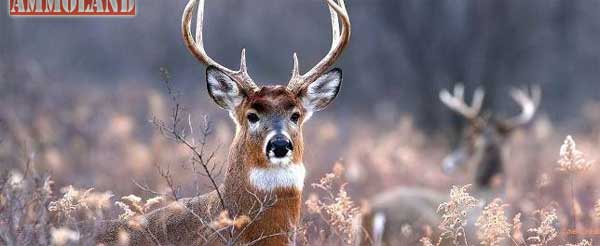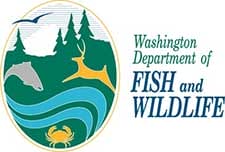

Olympia, WA -(Ammoland.com)- State wildlife officials are temporarily feeding deer to protect orchards in the Pateros area but say widespread feeding of Okanogan County mule deer is not needed at this time.
Washington Department of Fish and Wildlife (WDFW) northcentral regional director Jim Brown said most deer are faring well thanks to mild weather and below-average snow cover in the wake of the largest wildfire in state history in July. The Carlton Complex fire scorched tens of thousands of acres of wildlife habitat, including some traditional mule deer winter range.
But a mild, rainy fall has produced some of the best forage for deer in recent years, both inside and outside of the burn area, Brown said.
“Deer often concentrate during the winter near Pateros’ fruit tree orchards – independent of the effects of fire – and cause damage,” Brown said. “Until more deer fence is repaired, we are using feed to draw deer away from the orchards.”
Brown said the current feeding effort is designed to limit orchard damage without disrupting the deer’s normal diet and potentially causing health problems. WDFW uses specially-formulated feed to fulfill – on a short-term basis – the deer’s nutritional needs.
In general, WDFW and other wildlife managers discourage the public from winter feeding of deer and other wildlife because it can harm the animals, said Kristin Mansfield, WDFW wildlife veterinarian. Deer, for instance, need to feed on many different kinds of plants to maintain a nutritionally balanced diet. Mansfield noted that some well-intentioned people have been feeding deer fruits and grains.
“Fruit and grains are not a normal part of a deer’s diet at this time of year and can be extremely difficult for deer to digest,” Mansfield said, adding that a steady diet of such high-carbohydrate fare can elevate the animals’ stomach acid levels and cause serious illness and even death.
Mansfield said she appreciates people wanting to help animals in what seems like harsh conditions.
“But most feeding just makes us feel good and can end up being bad for the animals,” she said. “Fruit is too high in carbohydrates and lacks the nutrients deer need to stay healthy. It’s a bit like letting your kids eat nothing but candy bars.”
“Supplemental feeding also disrupts the natural foraging patterns of deer and concentrates the animals into one location,” said Scott Fitkin, WDFW district wildlife biologist. “Having too many deer in one area makes them vulnerable to disease, predation, poaching, and motor vehicle collisions if feeding stations are near roads.”
Fitkin added that attempting to maintain a deer population out of proportion to its available habitat through supplemental feeding can be counterproductive to the animals’ long-term health.
“All those deer will mow down any shrubs trying to re-sprout, setting back both the quantity and quality of healthy winter range for years to come,” he said.
Nearly $10,000 raised last month by the Mule Deer Foundation through its Methow Valley chapter will all be used locally for range restoration activities such as shrub plantings and re-seeding the area burned by the Carlton Complex Fire. About half of the deer fawns born annually don’t survive the winter in Okanogan County, Fitkin said.
However, deer that are in good shape at the beginning of winter can generally survive on fat reserves for two to three months with minimal forage.
“The long range forecast for this winter bodes well for these deer — above normal temperatures and below normal precipitation,” Fitkin said. “We are prepared to provide supplemental feeding, on an emergency basis, if extreme weather conditions develop.”
For more information on winter wildlife feeding, see wdfw.wa.gov/living/winter_feeding/wildlife.html.
About The Washington Department of Fish and Wildlife (WDFW)
The Washington Department of Fish and Wildlife (WDFW) is dedicated to preserving, protecting and perpetuating the state’s fish and wildlife resources. The department operates under a dual mandate from the Washington Legislature to protect and enhance fish and wildlife and their habitats and provide sustainable, fish- and wildlife-related recreational and commercial opportunities.
